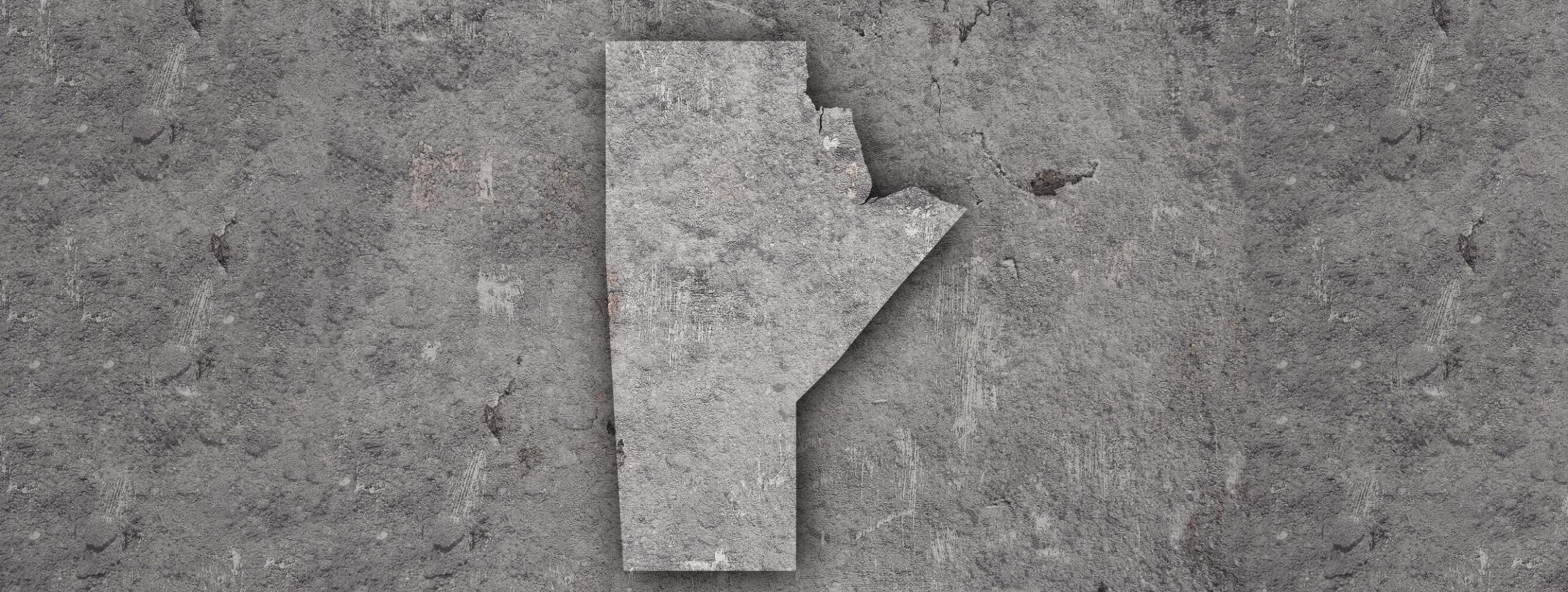
Concrete Manitoba
Concrete Manitoba is an industry association representing approximately 100 leading companies in the industry.
Established in 1971 as the Manitoba Ready Mix Concrete Association, Concrete Manitoba represents the interests of producers, manufacturers, and sellers of concrete and related companies.
Concrete Manitoba is driven by the desire to tell the story of concrete and promote its use for the betterment of Manitoba’s economy, the health of its infrastructure, the well-being of its communities, and the welfare of its environment.
Established in 1971 as the Manitoba Ready Mix Concrete Association, Concrete Manitoba represents the interests of producers, manufacturers, and sellers of concrete and related companies.
For Government
Some of the most important decisions that governments need to make revolve around how to plan, build, and manage physical infrastructure. Effective government decisions are those that keep an eye of the triple bottom line by achieving social, environmental, and economic benefits.
Concrete thoughts:
-
Advanced lifecycle assessment tools help governments plan projects accurately and with a keen understanding of the total cost of ownership.
-
The production of concrete keeps people employed in communities throughout Manitoba and across Canada.
-
Concrete is the most reliable building material for roads, bridges, sewer systems, and buildings.
-
Concrete is an environmentally friendly alternative. It lasts long, it makes buildings more energy-efficient, and it requires fewer repairs.
-
The concrete industry works closely with government to improve environmental standards in the industry.
-
Environmental standards in the industry are advancing continuously. The industry is an important partner in helping the governments of Manitoba and Canada meet their greenhouse gas emission targets.
For Trades
Your best work should last forever. Concrete buildings, roads, and other infrastructure projects perform exceptionally well for the long term. They require little maintenance and they can meet a designer’s highest expectations. New innovations in concrete production are providing architects, designers, and developers with greater flexibility in their projects and budgets.
Concrete thoughts:
-
As an environmentally friendly product, concrete is a key component in the pursuit of LEED certification. Concrete adds 20 points in the certification process.
-
Concrete is highly fire resistant.
-
Advanced lifecycle assessment tools help architects, designers, and developers plan projects accurately and with a keen understanding of the total cost of ownership.
-
For developers, pervious (porous) concrete can be used for sidewalks and parking surfaces to recharge groundwater, thereby eliminating the need for expensive retention ponds.
-
The concrete industry works closely with government to improve environmental standards in the industry.
-
Concrete withstands natural disasters and extreme weather events better than any other building material.
For Environmental Groups
Concrete is the building material of choice for progressive builders, planners, and public officials in Canada and around the world. The concrete industry is well aware of the need to perform responsibly and do its part in helping to protect the planet and reduce adverse human impacts on the environment. The industry prides itself on its commitment to innovation and sustainable development.
Concrete thoughts:
-
It takes less energy to produce concrete than it does to produce steel or wood according to a study conducted by the National Ready-Mixed Concrete Association and reported by the World Business Council for Sustainable Development.
-
The production of cement – the primary ingredient of concrete – is responsible for 1.5% of Canada’s CO2 emissions, compared with 3% for the forest industry.
-
Given the costs and challenges of shipping concrete, most concrete is produced very close to where it will be used. This reduces the need for fuel for transportation.
-
Concrete is highly reflective. A high percentage of the light that hits concrete roads and walls is reflected, thereby helping to keep cities cooler and reduce the need for air conditioning.
-
Heat moves very slowly through concrete walls and floors, thereby reducing swing in indoor temperatures.
-
The industry increasingly uses waste products to the replace some of the conventional cement required in the production of concrete.
-
The concrete industry has made important progress in its use of alternative fuels.
-
The longevity and stability of concrete means that it requires less maintenance and it is rarely replaced.